-
To evaluate the results of learning activities received by graduates from the Department of Environmental Geography at the Faculty of Geography-Gadjah Mada University, the Department of Environmental Geography has set some parameters to evaluate learning outcomes in the form of Expected Learning Outcomes (ELO), which are categorized into 4 points, namely:
- Knowledge and understanding-based competency
- Intellectual skill-based competency
- Practical skill-based competency
- Managerial skill and attitude-oriented competency
In more detail, the above points contains a set of Learning Outcome Programs (PLO), which are shown as follows:
- A1: to demonstrate knowledge of physical geography, human geography, ecological and environmental sciences to broader interdisciplinary problems.
- A2: to implement knowledge on the principles of the spatial variation of geographical phenomena to broader interdisciplinary problems.
- A3: to apply theories of interrelation, interaction, and interdependence between environmental components to broader interdisciplinary problems.
- B1: to identify physical and human resources-related issues by applying geographical and environmental methods and techniques.
- B2: to analyze physical and human resources-related problems by applying the methods of spatial, ecological, and regional complex analysis.
- C1: to design and conduct research in physical geography, human geography, and environmental sciences or related areas using geospatial technologies.
- C2: to acquire, analyze, and interpret geographic as well as regional and environmental resources data.
- D1: to show awareness of environmental and social problems and behave according to moral and ethical values and local content in the community context and the workplace.
- D2: to develop lifelong learning skills and improve knowledge formally or informally at the global level.
- D3: to work professionally both individually and in a team.
The assessment criteria for each course are based on the curriculum map of the Department of Environmental Geography as follows:
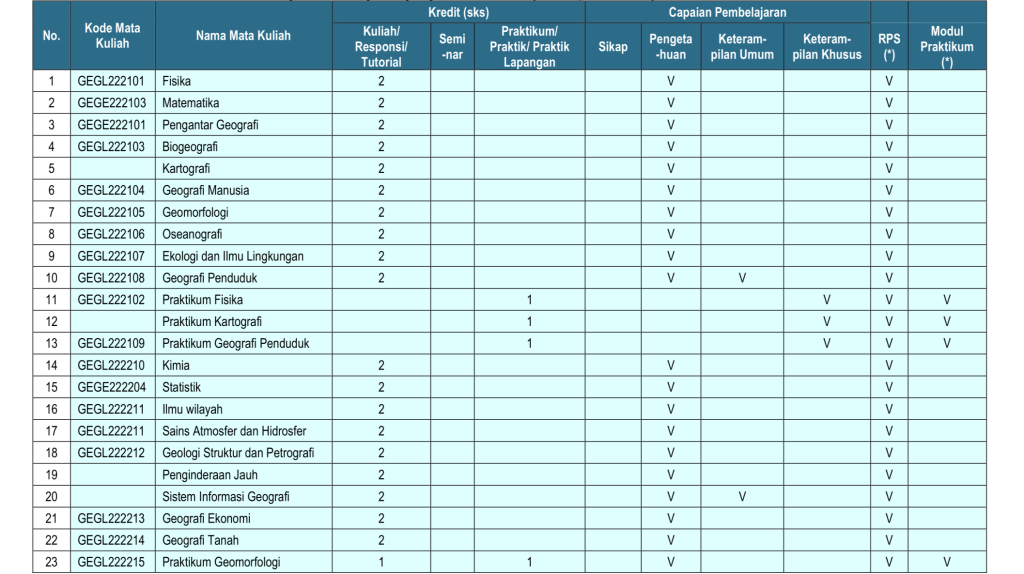
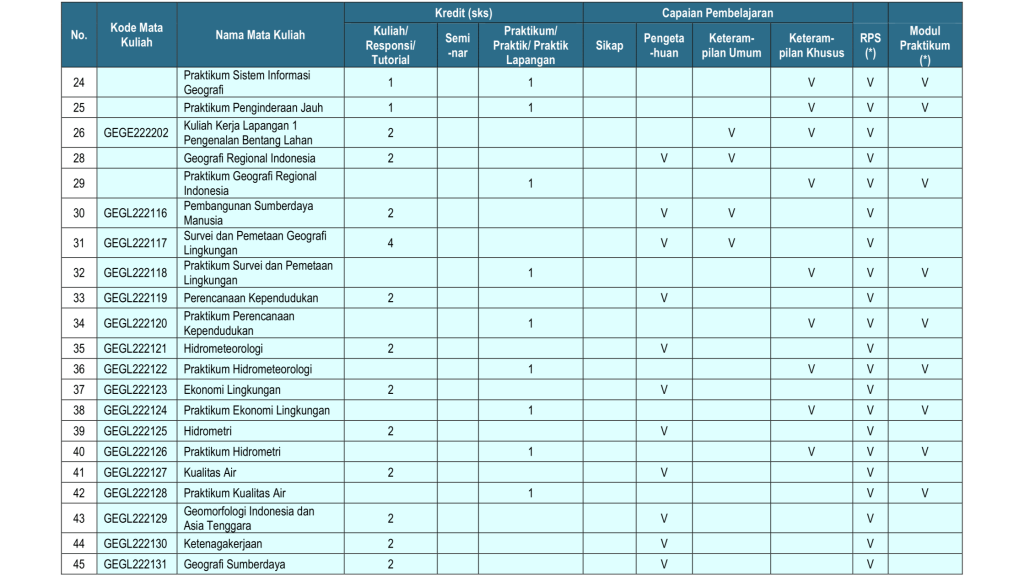
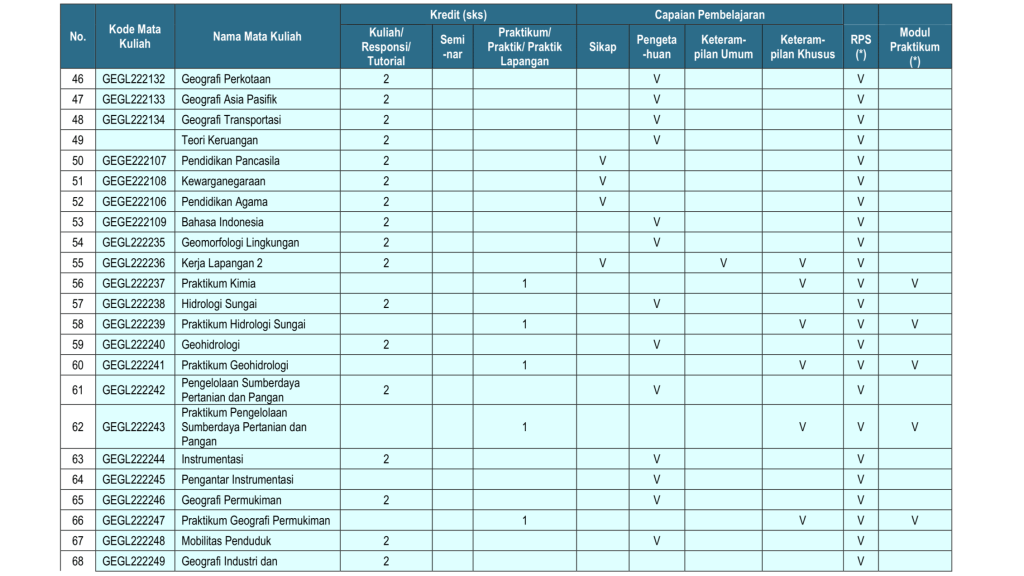


Based on the proportion of ELO and PLO from the entire course in the Department of Environmental Geography (Figure 1), most of the ELO proportions given are in point A and C. Point A (Knowledge) covers 46% of all evaluation factors, while Point C (Practice) covers 26% of all factors. Intellectual factors occupy the third position with an amount of 18%, and managerial factors and attitudes cover 12% of the overall factor.
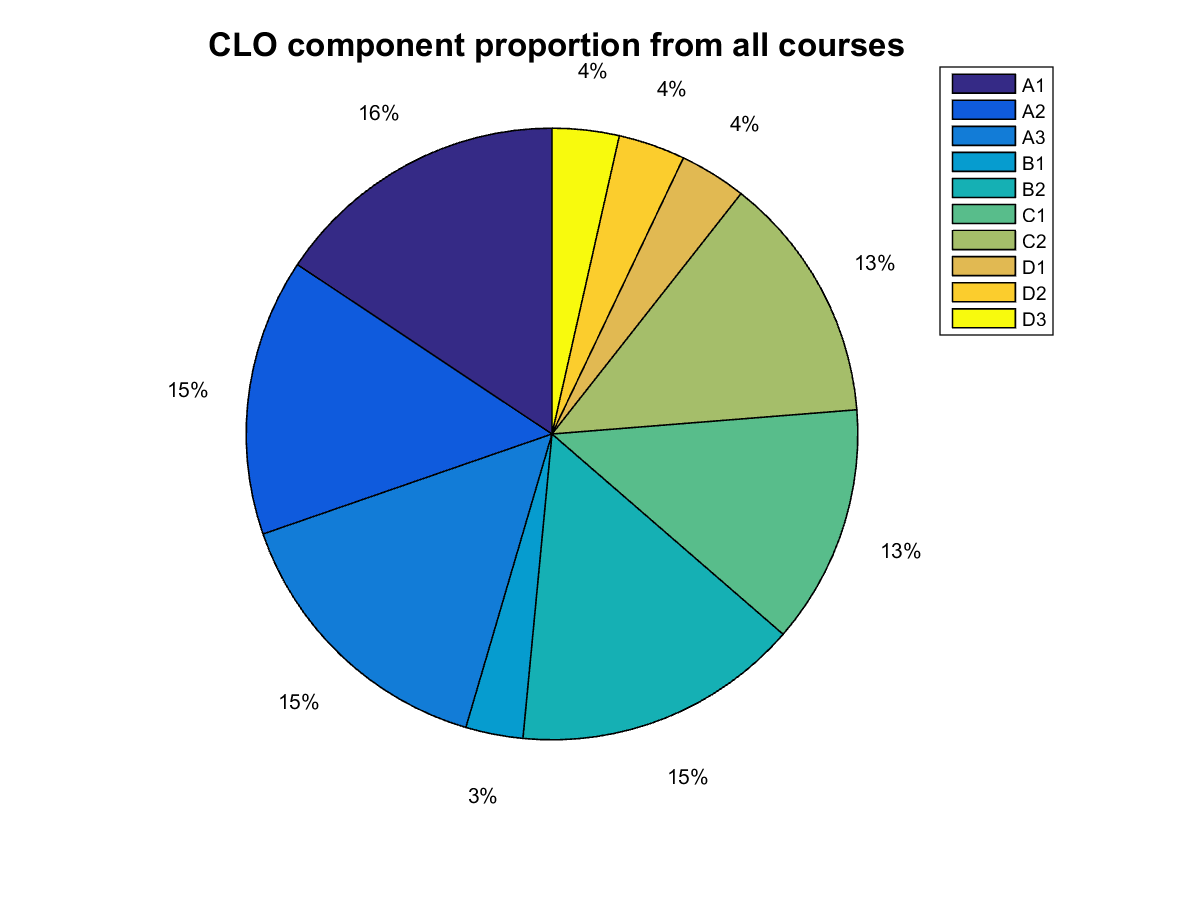
Figure 1. Proportion of PLO from the entire course in the Department of Environmental Geography -
Learning Achievement Assessment System of Environmental Geography Department(SIPILAR GEL)
Assessment of learning outcomes in the Department of Environmental Geography was conducted based on the Learning Achievement Assessment System of Environmental Geography Study Program (SIPILAR-GEL). Assessment using SIPILAR-GEL is conducted using the Microsoft Excel program. The SIPILAR-GEL input is carried out by each lecturer in the course by considering the curriculum map. The assessment includes 4 media components which include assignments and examinations- SIPILAR-GEL Download Here
- Guidelines for SIPILAR-GEL Download Here
SIPILAR-GEL MEDIA ASSESSMENT
There are 4 component of media assessment, covers:- Individual assignment
- Group assignment
- Midtest
- Final test
Weight of each component above depends on the lecturer who delivered the subject.
SIPILAR-GEL RUBRIC CRITERIA
Based on the scores of each student for each ELO, the values are classified into 4 classes with the following descriptions:- High Distinction:Show complete understanding of the exercise, can demonstrates full knowledge of the subject with explanation and elaboration
- Distinction:Shows substantial understanding of the exercise, at ease with subject content, able to elaborate and explain to some degree
- Credit:Response shows some understanding of the exercise, uncomfortable with content, only basic concepts are demontrated and interpreted
- Fail:response shows lack of understanding
BASIC CONCEPT OF THE ASSESSMENT
The calculation for ELO for each subject is calculated based on the percentage of students who meet the credit score for each subject compared to the number of students who failed to reach the ELO value target (Figure 1).

Figure 1. Example assessment of ELO A1-A3The assessment formula for each ELO of the subject is carried out using the following formula:
Score=100% * ((High Distinction+Distinction+Credit)/(High Distinction+Distinction+Credit+Fail)) -
The results of the evaluation of learning outcomes for the average of all courses in the Department of Environmental Geography are shown in Figure 1. The results of the analysis show that there is an increase in achievements from the 2016-2017 to 2017-2018. There is an increase of almost all components, especially for point A (knowledge), B (intellectual), and C (practice). While for item D (managerial and attitude) which has the highest value compared to other components also experienced a slight increase.
The results of evaluation of learning outcomes in more detail can be classified based on the home laboratory (Figure 2). Based on these results, an increase in the evaluation score is found for the course subjects in HKL and KSE home laboratories. Meanwhile, there was a decrease in the evaluation score compared to the previous year for the courses in the GLMB home laboratory as well as several integrated courses in the department.
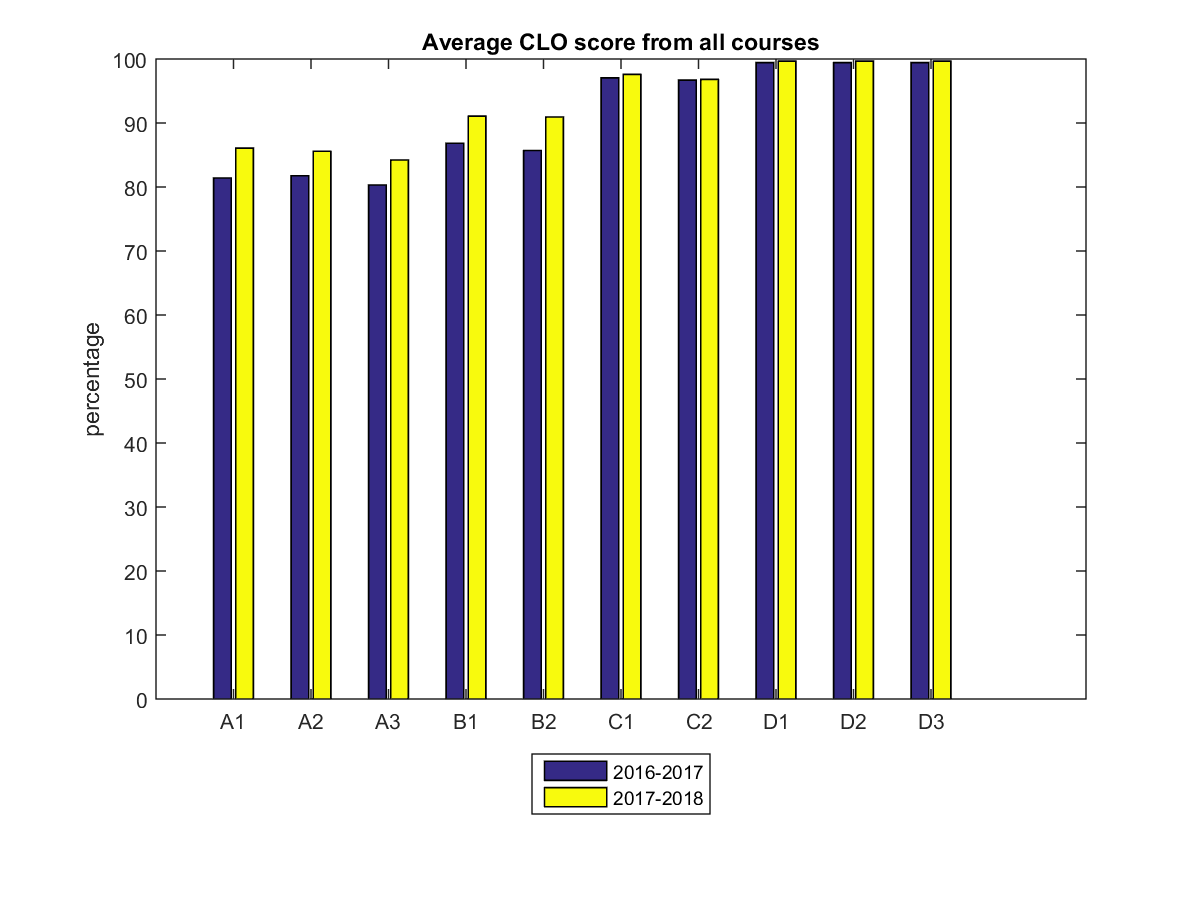
Figure 1. Average ELO score for all courses in Department of Environmental Geography.Courses that experienced a decrease in achievement scores compared to the previous year shown in the above picture can be specified based on the home laboratory. The results of the analysis show that there are 6 subjects holding on to the HKL lab, 6 subjects holding on to the GLMB Lab, 8 Subjects holding on to the KSE Lab, and 2 courses that are integrated and held by the department.
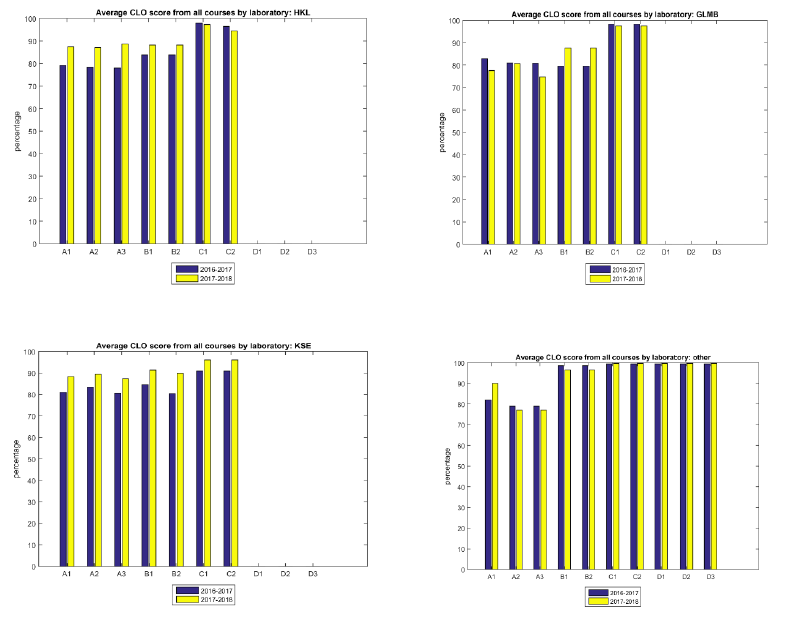
Figure 2. Evaluation of performance based on the average ELO based on the home laboratory
